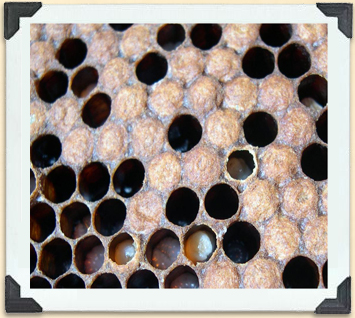Life in a Hive

Larvae grow very rapidly in a brood frame.
© University of Manitoba
Brood Chamber
The brood chamber (usually in the bottom boxes of the hive) houses worker-made cells where the eggs, larvae and pupae develop. Some of the cells in this part of the hive also hold pollen, nectar or honey that's used to feed the developing larvae.
Many beekeepers use a screen called a "queen excluder" to keep the queen in the hive's lower boxes. This stops her from laying eggs in the honey supers, or upper boxes, which hold the frames that the beekeeper removes to collect the honey.




